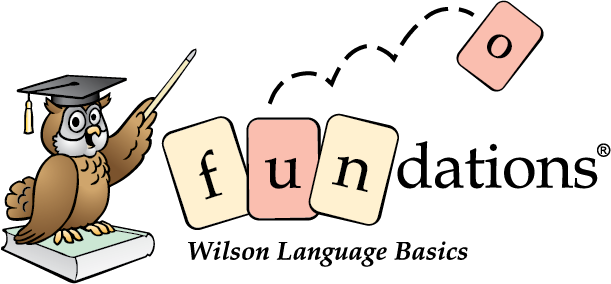Level 2
Level 2 of Fundations® builds on the basic skills that were learned in Kindergarten and Level 1 and progresses further into the study of word structure. Teachers should combine Fundations with a wide variety of text experiences, and expose students to poetry, narrative and informational text.
By the end of Level 2, students will be able to:
- Know and apply grade-level phonics and word-analysis skills in decoding words
- Segment syllables into sounds (phonemes)–up to six sounds
- Identify word structures such as vowels, consonants, blends, digraphs, and digraph blends
- Identify parts of words (syllables, basewords, suffixes)
- Identify all six syllable types: closed, vowel-consonant-e, open, r-controlled, vowel digraph/diphthong, and consonant-le
- Distinguish long and short vowels when reading regularly spelled one-syllable words
- Read and spell words with short vowels
- Read and spell words with long vowels in vowel-consonant-e and open syllables
- Read and spell words with r-controlled vowels (ar, er, ir, or, ur)
- Read and spell words with vowel teams (ai, ay, ee, ey, ea, oi, oy, oa, ow, oe, ou, oo, ue, ew, au, aw)
- Read and spell words with unexpected vowel sounds (old, ild, ind, ost, olt, ive)
- Read and spell words with suffixes (-s, -es, -ed,-ing, -est, -ish, -able, -ive, -y, -ful, -ment, -less, -ness, -ly, -ty)
- Read and spell words with common prefixes (un-, dis-, mis-, non-, trans-, pre-, pro-, re-, de-)
- Read and spell phonetically regular one-, two- and three-syllable words
- Identify words with inconsistent but common spelling-sound correspondences
- Read and spell the first 200 high frequency words including irregular words
- Divide multisyllabic words
- Produce complete sentences when appropriate to task and situation in order to provide requested detail or clarification
- Use synonyms
- Know some multiple meaning words
- Apply dictionary skills
- Use correct writing position and pencil grip
- Write clear, legible manuscript at an appropriate rate
- Spell words with options for the grapheme representation for sounds with use of a spell checker or dictionary
- Apply correct punctuation (period, question mark, exclamation point)
- Apply capitalization rules for beginning of sentences and names of people
- Read controlled stories with fluency, expression and understanding
- Read approximately 90 words per minute with fluency and understanding
- Retell short narrative stories, recounting key ideas and details
- Retell facts from informational text
- Locate facts and details in narrative and informational writing
- Skim for information
- Make judgments, predictions from given facts
- Use sentence-level context as a clue to the meaning of a word or phrase
- Determine the meaning of a new word when a prefix is added to a known word
- Use knowledge of the meaning of individual words to predict the meaning of a compound word
- Identify real life connections between words and their use — answer who, what, where, when, why and how questions with narrative and informational texts
- Answer who, what, where, when, why and how questions with narrative and informational text
- Describe how characters in a story respond to major events and challenges
- Determine the central message of a story
- Identify the main topic/purpose of an informational text as well as the focus of specific paragraphs
- Use words and phrases acquired through conversations, reading and being read to, and responding to texts, including using adjectives and adverbs to describe
Do your rising second graders need extra support before beginning the Level 2 curriculum? Consider Fundations Ready to Rise™ Level 2 for rising second graders.






